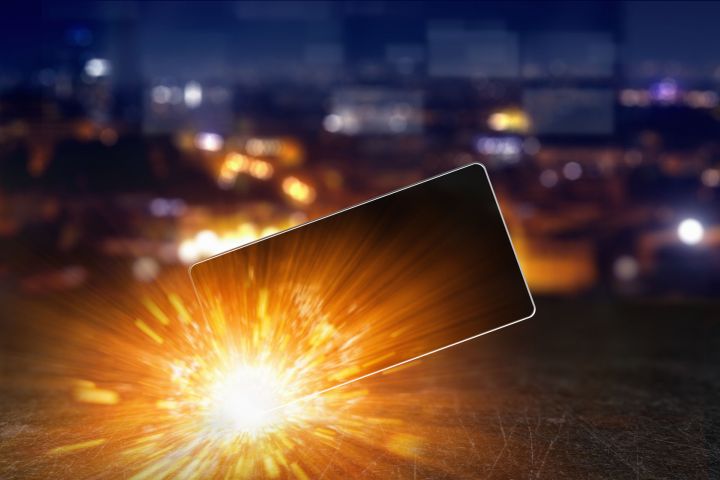
In a serious effort to build something that could prove useful for governments or businesses handling highly sensitive information, researchers at King Abdullah University of Science and Technology (KAUST) have built a tiny prototype component that, when fixed inside a smartphone or similar gadget and activated, can destroy its vital innards in a matter of seconds.
The device comprises a polymer layer that rapidly expands to up to seven times its original size when heated to anything above 80 degrees Celsius. The heat is generated by a number of electrodes that draw their power from the gadget’s battery. As the polymer layer expands, it crushes and destroys nearby parts, rendering them useless.
While it’s possible to wipe a phone remotely, physically mashing up its internals in the event of losing highly sensitive data may be a preferable course of action for those dealing with such content.
“The first customers would be the ones who need data protection: Intelligence communities, corporations, banks, hedge funds, social security administrations, collectors who handle massive data,” Muhammad Mustafa Hussain, an electrical engineer at KAUST, told Spectrum.
The team also tried out different methods to set off the mechanism remotely, as if in a real-life situation. One involved fitting a pressure sensor inside the gadget that caused it to self-destruct if someone forced the cover off, while another linked it to a smartphone app that required a password to activate the wrecking mechanism remotely. A third experiment used GPS technology to activate the self-destruct process if the gadget was moved beyond the boundary of a designated area.
There’s still much work to be done before government operatives and secret agents have any hope of using this particular bit of kit. For example, the team wants to refine its technology and enhance it so it can destroy additional important components inside the mobile device or computer in which its been installed.
At this early stage, the work appears to show real promise and is particularly notable for its low cost. The team says it may cost as little as $15 per device and could even be easily retrofitted to larger devices such as laptops.
There have been other attempts to create self-destructing components for mobile devices, including this exploding glass chip from DARPA, but, as far as we know, a cheap and effective design is yet to make it to market.
Editors' Recommendations
- 5 phones you should buy instead of the Google Pixel 8
- No, the Journal app on your iPhone isn’t spying on you
- If you have one of these apps on your Android phone, delete it immediately
- Want to turn your iPhone into a Galaxy S23? This app is for you
- The EU is building your next iPhone, and it’s going to be fine


